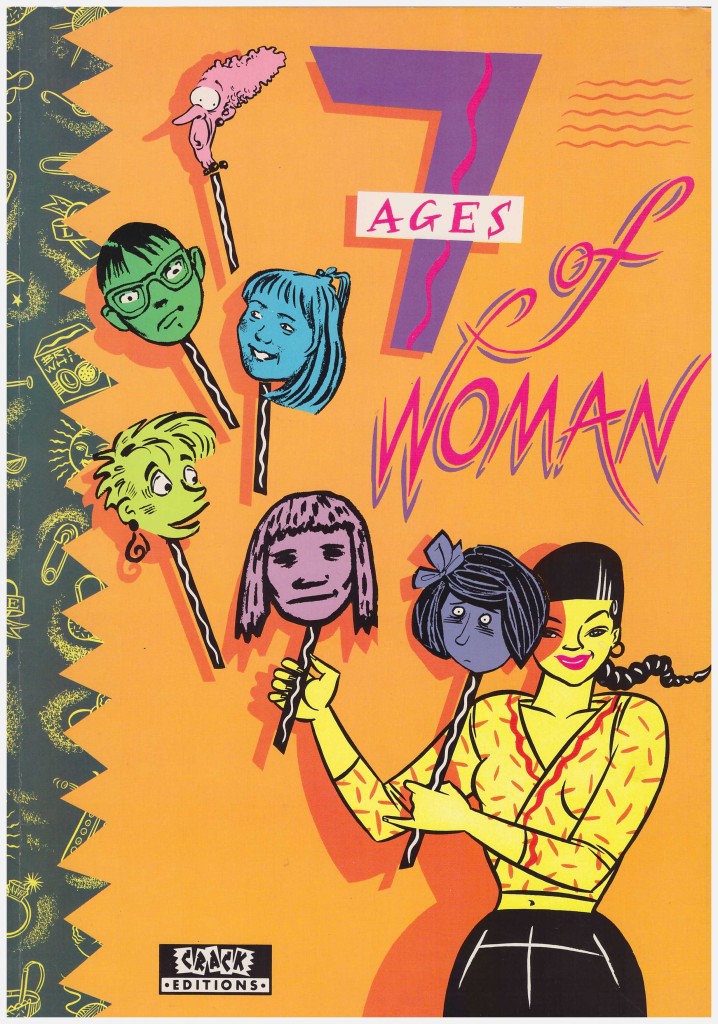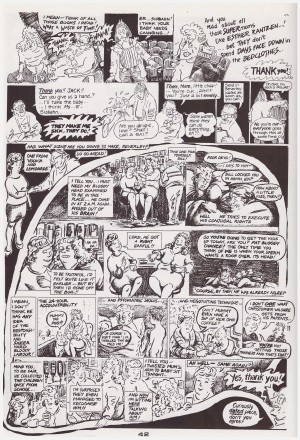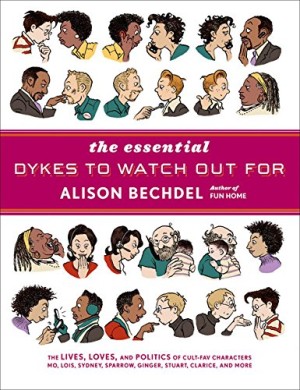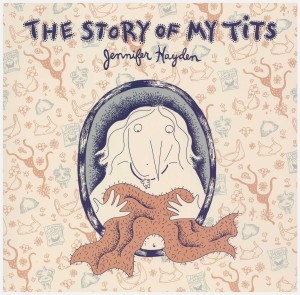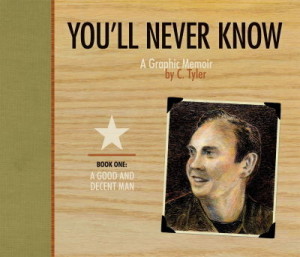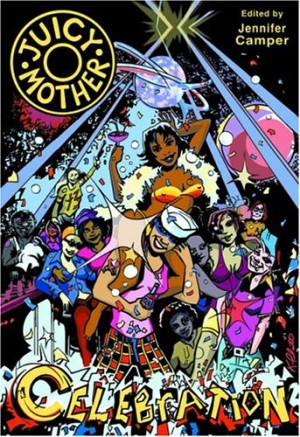Review by Ian Keogh
This anthology was a statement sadly well ahead of its time from editor Carol Bennett, who spent the 1980s wondering why the world of the comic artist in the UK was almost exclusively male. One possible answer is that the material of the time was predominantly aimed at male interests, so Bennett supplied the theme, the page count and the deadline and within that there was almost complete creative freedom for the creators she contacted.
The seven ages featured are infancy, school age, the working girl, the lover, motherhood, the divorcee and old age. Had it been deliberately planned as such Bennett couldn’t have found a more diverse selection of artistic styles, very few of them comparable with those found in contemporary comics. Jackie Smith comes the closest, synthesising the cartooning of children’s comics with a more underground approach. The diversity is extremely effective in establishing an instant tone for each stage of life, but by conventional standards of illustration the work of some is more effective than others when it comes to telling the stories. Kate Charlesworth’s cartooning on the opening chapter is delightfully expressive, but choosing not to have borders between her panels makes for a cluttered reading experience. Carol Swain never varying the distance from which events are viewed is off-putting, while Caroline Della Porta’s work is two-dimensional and says little. Julie Hollings covers much the same territory with far more wit and verve, and hers is the funniest work in the collection.
Nearly every strip deals with the prejudice women face on a daily basis, negative attitudes toward them, and what’s perceived as their place, the message more subtle from some creators that others. Collectively it’s a damning statement. Some also appear to purge some demons. Melinda Gebbie in particular when relating her experiences as a young girl.
Corinne Pearlman (sample art) deserves special mention as someone whose material has floated too low under the radar. She takes on the motherhood section, presenting the densest read in the book, imparting more in eight pages than some creators manage in a graphic novel ten times that length. Posy Simmonds appears to be an influence when it comes to the imaginative manner Pearlman lays out pages, permitting a complexity that also enables taking in fatherhood as assorted scenarios related as auditions for a play allow a variety of opinions on motherhood.
Smith’s closer is also good, defining not just old age, but reflecting on the life that’s passed and the important moments. It’s in the context of a women fending off a personification of death, and very funny.
As with every anthology, different sections will speak to different people, and one person’s Georgia O’Keefe is another’s Tracey Emin and vice versa, and it’s difficult to imagine the person to whom all seven stories will appeal. The cover reflects the different art styles within.
